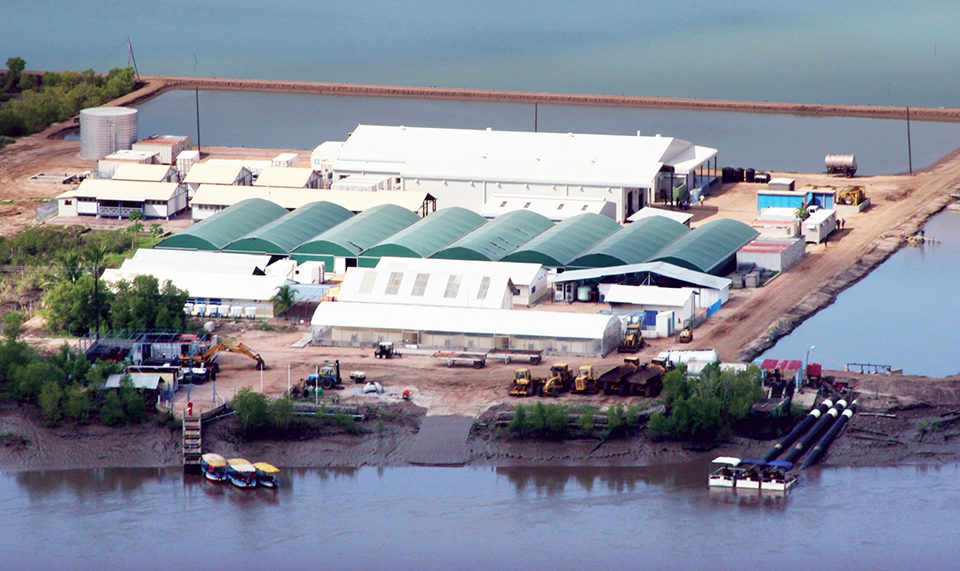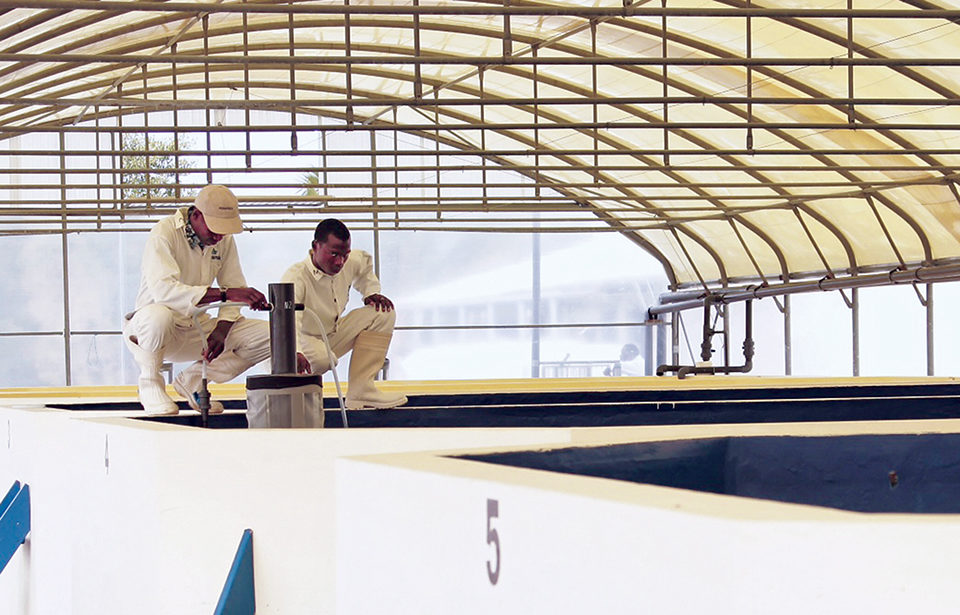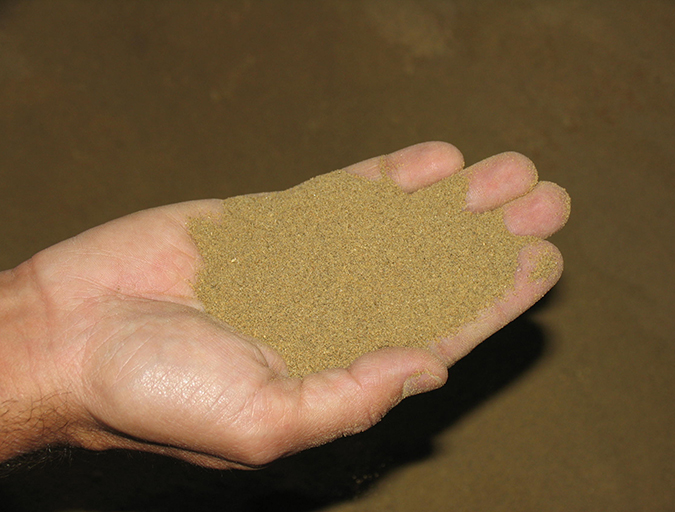Mozambique research obtains shrimp postlarvae with WSSV acquired immunity

Aquapesca, a farm in Mozambique in southeastern Africa, is engaged in the production of high-quality, organic black tiger shrimp. After being hit hard by white spot syndrome virus (WSSV) in 2011, Aquapesca and a French biologist began a research project named FAMA to address control of the pathogen.
After three years of research and major investment in a hatchery based in Nacala, Mozambique, the project continues to operate under the watchwords of “bringing the enemy on board.” The results so far demonstrate the possibility of developing acquired immunity to WSSV within shrimp – adding a new means of potential control.
Boost immunity
Until now, hatcheries have generally focused on the use of pathogen-free broodstock and biosecurity measures or, more recently, have obtained very interesting results with selected resistant strains through domestication. The current FAMA idea is to activate the innate immune systems of the shrimp postlarvae by applying a specific and strict manipulation of the water parameters during the treatment, intensity level and timing, with the secondary help of immunostimulants.
Core experiment: controlled inoculation, treatment
The first core experiment established the ability to infect the postlarvae in a controlled manner and demonstrated the positive effect of the applied treatment. Several larval-rearing tanks, each containing 30,000 Penaeus monodon postlarvae issued from the same batch, were inoculated with WSSV, and the new treatment was applied. Control tanks receiving no disease treatment were inoculated simultaneously.
At day 17 after inoculation with WSSV, shrimp in the treated tanks showed survival rates above 80 percent, while the control tanks had 0 percent survival. The latter figure was not surprising, given that the Mozambican WSSV strain is particularly virulent.
Challenge experiment: acquired resistance
Thirty days after the initial inoculation, the treated postlarvae were again inoculated with WSSV using the same method employed during the core experiment. At the same time, another control tank was inoculated from the same initial batch of postlarvae, which was never in contact with WSSV and had not received any treatment.
The treated animals that survived the first inoculation during the core experiment showed no clinical signs of WSSV infection and had no mortality after seven days. Meanwhile, the shrimp in the control tank again experienced 100 percent mortality. This second challenge experiment demonstrated the induced acquisition by the postlarvae of resistance to a later outbreak of WSSV.

Perspectives
These astonishing results could be explained by the stimulation of the shrimps’ innate immune systems through the toll receptors and chaperon proteins generated by the presence of WSSV at the moment of initial treatment. This resulted in what appears to be an acquisition by the immune system of the shrimp of a kind of memory, preventing the re-entry of the pathogen at a later stage in the treated postlarvae.
The authors are now working on the hypothesis that the innate immune systems of shrimp – and probably other invertebrates – can be triggered to memorize the signature of pathogens with a similar function and result as the adaptive one known to occur in vertebrates.
FAMA project members strongly believe that if these preliminary results are confirmed by new experiments, it could be a tremendous revolution in controlling not only WSSV, but all pathogens in shrimp farming. The ability to produce shrimp postlarvae resistant to a specific disease has the potential to benefit the whole shrimp-farming industry.
It is the result of an international effort led by the Responsible Aquaculture Foundation and World Bank to analyze and draw practical lessons from the experiences of aquaculture disease outbreaks in Madagascar, Mozambique, Chile and Vietnam to assist stakeholders throughout the aquaculture industry in understanding the management of aquatic diseases.
(Editor’s Note: This article was originally published in the March/April 2015 print edition of the Global Aquaculture Advocate.)
Authors
-
Mandresy Manantsara
FAMA Group
Aquapesca
Licunguma – Inhassunge Mozambique -
François Grosse
FAMA Group
Aquapesca
Licunguma – Inhassunge Mozambique -
Azmina Goulamaly
FAMA Group
Aquapesca
Licunguma – Inhassunge Mozambique -
Alain Michel
FAMA Group
Aquapesca
Licunguma – Inhassunge Mozambique
Tagged With
Related Posts

Health & Welfare
A holistic management approach to EMS
Early Mortality Syndrome has devastated farmed shrimp in Asia and Latin America. With better understanding of the pathogen and the development and improvement of novel strategies, shrimp farmers are now able to better manage the disease.

Health & Welfare
A comprehensive look at the Proficiency Test for farmed shrimp
The University of Arizona Aquaculture Pathology Laboratory has carried out the Proficiency Test (PT) since 2005, with 300-plus diagnostic laboratories participating while improving their capabilities in the diagnosis of several shrimp pathogens.

Aquafeeds
A look at protease enzymes in crustacean nutrition
Food digestion involves digestive enzymes to break down polymeric macromolecules and facilitate nutrient absorption. Enzyme supplementation in aquafeeds is a major alternative to improve feed quality and nutrient digestibility, gut health, compensate digestive enzymes when needed, and may also improve immune responses.

Aquafeeds
A look at the SME controlled extrusion process
A study was conducted using a Twin-Screw Extruder equipped with Specific Mechanical Energy (SME) and Density Control valves, to determine the effect of SME on the water stability of shrimp feeds. Further research is needed to evaluate the performance.


